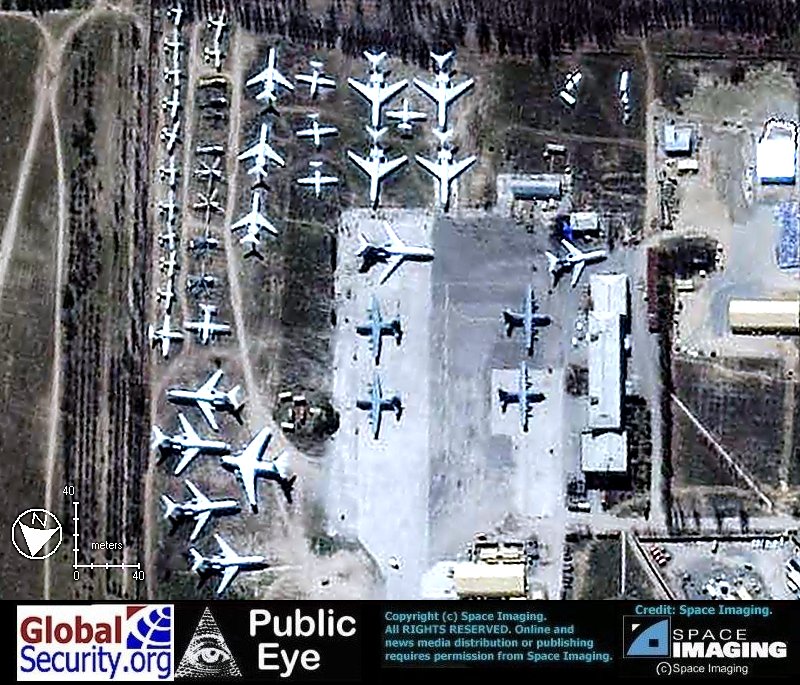Manas Air Base
Introduction
Two RAAF 707 refuelling aircraft were deployed to Manas Air Base in from late 2001 until September 2002. Australia ratified a Status of Forces Agreement with Kyrgyzstan in July 2002. Also known as Ganci Air Base.
Government sources
Report 46, Treaties tabled 12 March 2002, House of Representatives Joint Standing Committee on Treaties
Status of Forces Agreement between Australia and Kyrgyz Republic, National Interest Analysis, pp1-2 (as at 27 September 2002).
Air Force personnel home safely from Kyrgyzstan deployment, Defence Media Release, MSPA 529/02, 29 September 2002.
“Approximately 80 aircrew and support personnel had spent the past months conducting air to air refuelling operations out of Manas airfield in Kyrgyzstan. Their work involved refuelling aircraft such as French Mirages and US F/A-18s over Afghanistan. Since the start of coalition operations the Australian detachments offloaded more than 6 million pounds of fuel over 800 times to coalition combat aircraft.”
Analysis
In Reversal, Kyrgyzstan Won’t Close a U.S. Base, Michael Schwirtz and Clifford J. Levy, NYT, 23 June 2009
Kyrgyzstan has essentially reversed a decision to close an American air base that is central to the NATO mission in nearby Afghanistan, after the United States acceded to sharply higher rent and to minor restrictions on the site, Kyrgyz and American officials said Tuesday. The turnabout is a victory for the Obama administration as it seeks to step up operations to quell the Taliban insurgency in Afghanistan. The Kyrgyz government had ordered the base closed in February, apparently under pressure from the Kremlin, which has resented the deep American military presence in an area of the world that it has long considered its zone of influence. The Manas Air Base in Kyrgyzstan has been used since 2001 as a refueling stop and transit hub for operations in Afghanistan. Thousands of personnel and roughly 500 tons of cargo pass through the base each month. It has also been a focal point in the struggle between the United States and Russia for influence in the countries of the former Soviet Union. Russia pledged a $2 billion loan to Kyrgyzstan on the day in February that the Kyrgyz president announced that the United States would be evicted from the base.
The Kyrgyz and American governments both said the new arrangement would put limitations on the base. But neither side could point to any significant ones, and it seemed as if the agreement was written to offer the Kyrgyz government a face-saving way to undo its earlier decision. For example, the base is to be renamed a transit center, as opposed to an air base. And the Kyrgyz will control security around the base; currently, American military personnel do. The text of the new agreement specifies few other restrictions on how the United States can use the base. There do not seem to be any prohibitions on shipping weaponry.
Russia Plays Tricky Game with U.S. Over Kyrgyzstan Base, Shamil Baigin, Reuters, 2009-02-04
Russia has embarked on a risky political game with new U.S. President Barack Obama by forcing its ally Kyrgyzstan to close a U.S. military base while keeping up overtures to establish warmer relations with Washington. Kyrgyz President Kurmanbek Bakiyev standing alongside Russia’s Dmitry Medvedev at a news conference in Moscow, said on Tuesday he would close the base after securing a vital rescue package of over $2 billion from Russia.
Manas International Airport, Ganci Air Base, Bishkek, Kyrgyzstan, GlobalSecurity.org
Detailed material covering mainly 2001-2004. Includes links to Kyrgyzstan facilities and map of Operation Enduring Freedom Facilities (June 2005).
“Ganci Air Base, with civilian aircraft cleared from the tarmac and stored in an adjacent field. (Space Imaging, 04/12/03)
Source: GlobalSecurity.org
Kyrgyzstan’s Manas Airbase: A Key Asset in the War on Terrorism, John C.K. Daly, Terrorism Monitor, 18 January 2007
“Manas quickly proved to be a useful base for Afghan operations, as its 90-minute flying time to the war theater dwarfed the six to eight hours flight time from other potential launching areas, such as ships or U.S. bases in Saudi Arabia. Besides the U.S. forces involved in Operation Enduring Freedom, Manas hosted personnel from France, South Korea, Spain, Denmark, Norway, Australia and the Netherlands. Spanish, Dutch, Danish and Norwegian C-130s flew cargo missions; France contributed six Mirage 2000s and two C-135 re-fuelers; Australia sent two Boeing 707 refueling aircraft; and Spain offered HT-211 Super Puma rescue helicopters. Within about six months of September 11, the Pentagon established 13 bases in nine countries in and around Afghanistan. By October 2001, U.S. combat aircraft had flown over 900 sorties and logged more than 4,200 combat hours (Department of the Navy, Naval Historical Center, July-August 2002).
“Despite what may happen in the long-term, it is clear that the United States will remain at Manas in the near future. In October, the base received 7,256,000 gallons of fuel. In November, the U.S. troop transit rate through Manas tripled (DefendAmerica.com, November 11, 2006). Also in November, troops began winterizing the base (UPI, November 27, 2006).”
Manas Air Base, Wikipedia
See also
Updated: 25 June 2009


